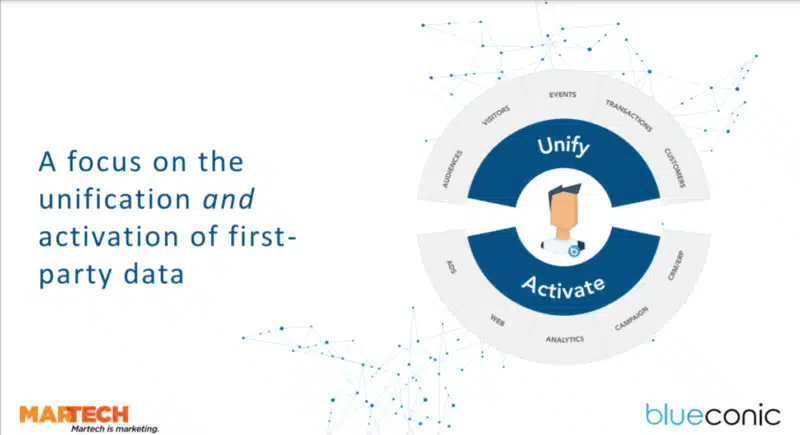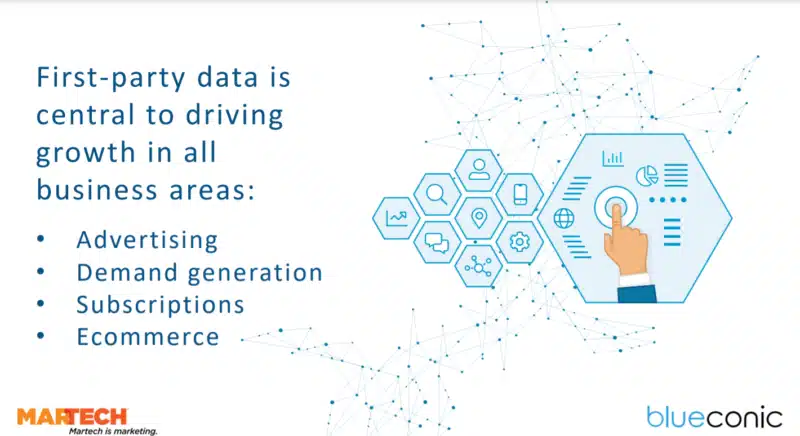Why first-party data collection should be a priority for marketers
Knowing the value of first-party data collection and activation is the first step toward successful campaigns.
“No matter what your business objectives are, you need to understand your audience and leverage that data to fulfill your objectives,” said Pete Wootton, Chief Product & Data Officer for U.K. and U.S.-based Dennis Publishing, at our MarTech conference.
To meet their business objectives, many marketers have found that first-party customer data collection intersects uniquely with their brand offerings as each informs the other. But in today’s world, brands are relying more on customer data collection and activation to achieve their goals.
“They’ve always been linked, but there is definitely more of a focus on the collection of first-party data and the use of that data,” said Wootton.

Without a first-party data collection process in place, marketers will find it difficult to build relationships with their customers and meet their objectives.
The challenges and benefits of first-party data collection
“No matter what part of the business we look at, data is central to it,” Wootton said.
Collecting consented first-party data gives brands those extra insights needed to better understand their audience and map out their buying journeys. And, fortunately, there are plenty of tools available to assist in the process.

“You need to make sure you have good insights into your audience,” Wootton said. “You need to leverage that data in order to maximize the opportunity. Understanding how they behave and what they’re interested in helps you sell products to them.”
Collecting data with a customer data platform
“If you need good quality data, you need to have a single customer view,” said Wootton. “Pull in all your different data sources to make sure you know who your audiences are and what they’re doing, then link that to offline data.”
Wootton said Dennis Publishing could complete some of these collection tasks with a data lake, but it was missing the single customer view that could turn the information into actionable pieces. So, it opted to use a CDP to help meet its organizational goals.
“As our knowledge increased, and as we saw the possibilities, we realized we needed to talk to suppliers,” he said. ”We had a consultant working with us and did an exploration process — we saw the opportunity in certain areas that we didn’t when we began.”
Looking to take control of your data? Learn about trends and capabilities of customer data platforms in the latest edition of this MarTech Intelligence Report.

The people and processes in data collection
A team isn’t complete without its players, and data collection isn’t complete without the people running it. In the same presentation, Jackie Rousseau-Anderson of Blueconic asked what Wootton’s organization would have done differently in revamping its data collection processes. In response, he highlighted the need for talented practitioners’ involvement in the whole process.
“I would have brought in some of that talent a bit earlier,” he said. “For example, we invested in some ‘superusers’ — people who are living and breathing it. We did that toward the end of the implementation, and I think in retrospect I would have brought them in much earlier.”
Hiring talented professionals from the get-go can help your data collection stay on track. But more than that, it can provide insights to continually improve your brand’s implementation efforts.
“They [the talent] would have helped shape some of our thinking and been a good foil for some of the ideas that we had about how it’s going to work in the real world,” Wootton said.
He added, “Get that resource in earlier instead of thinking it’s only a part of the delivery phase — I think they would be useful in the implementation phase.”
Watch the full presentation from our MarTech conference below.
Opinions expressed in this article are those of the guest author and not necessarily MarTech. Staff authors are listed here.
Related stories
New on MarTech